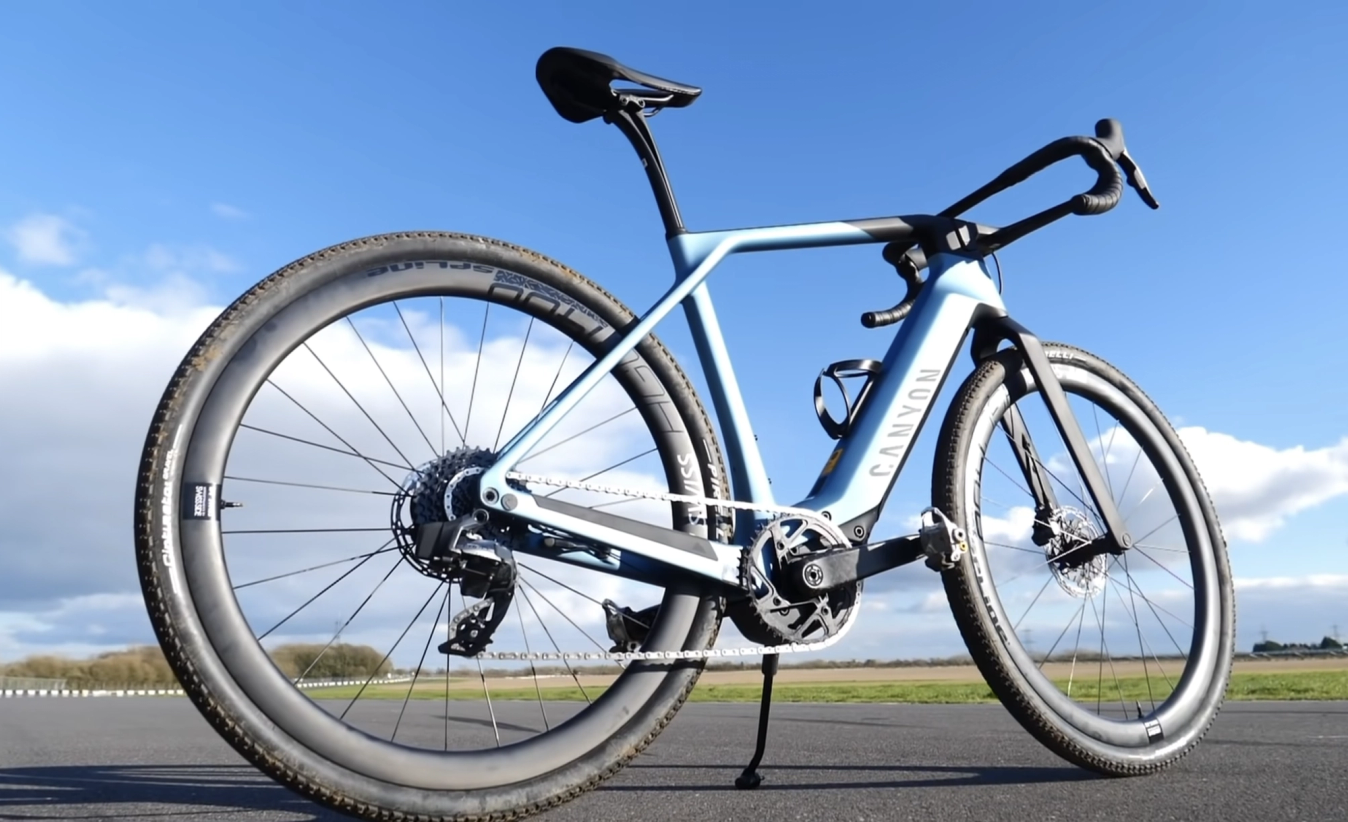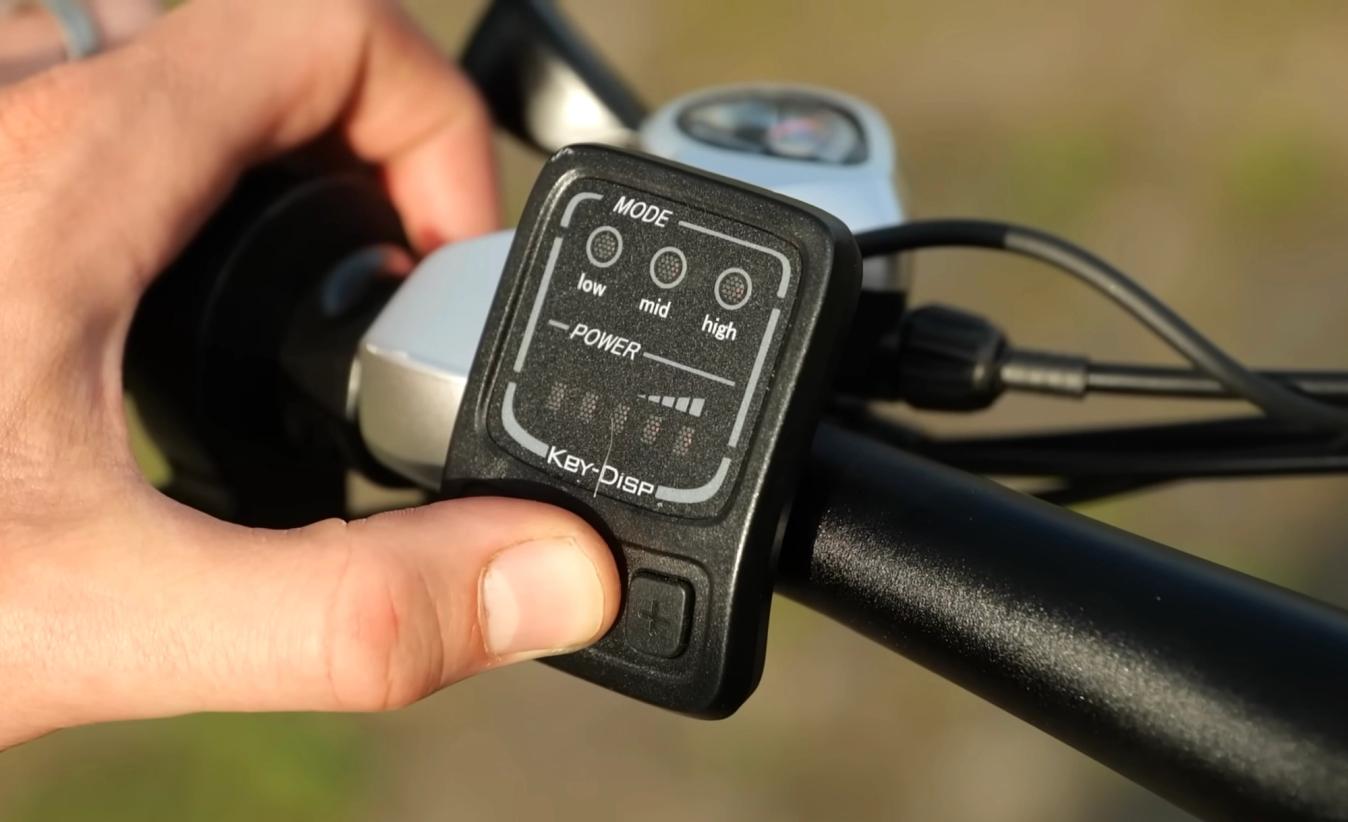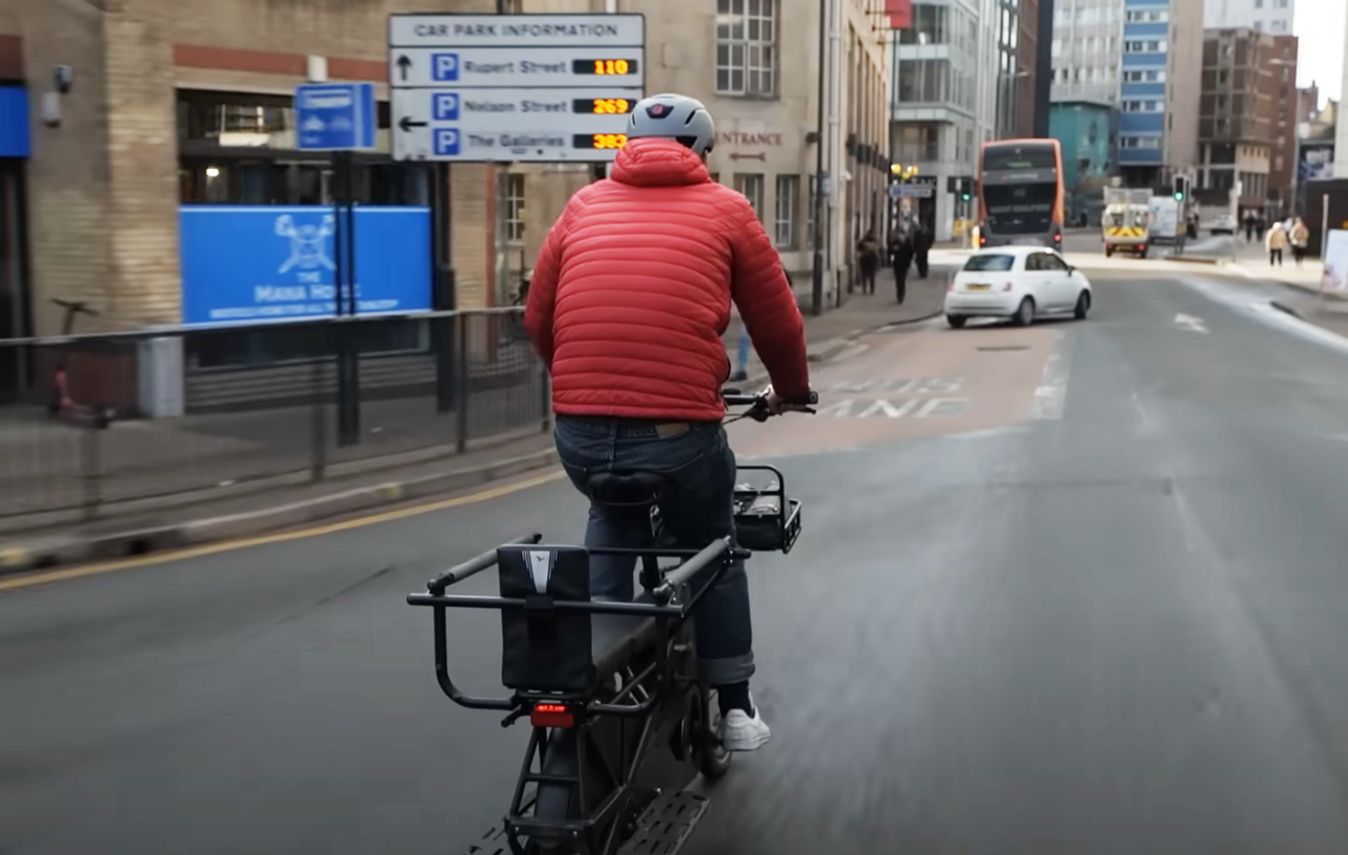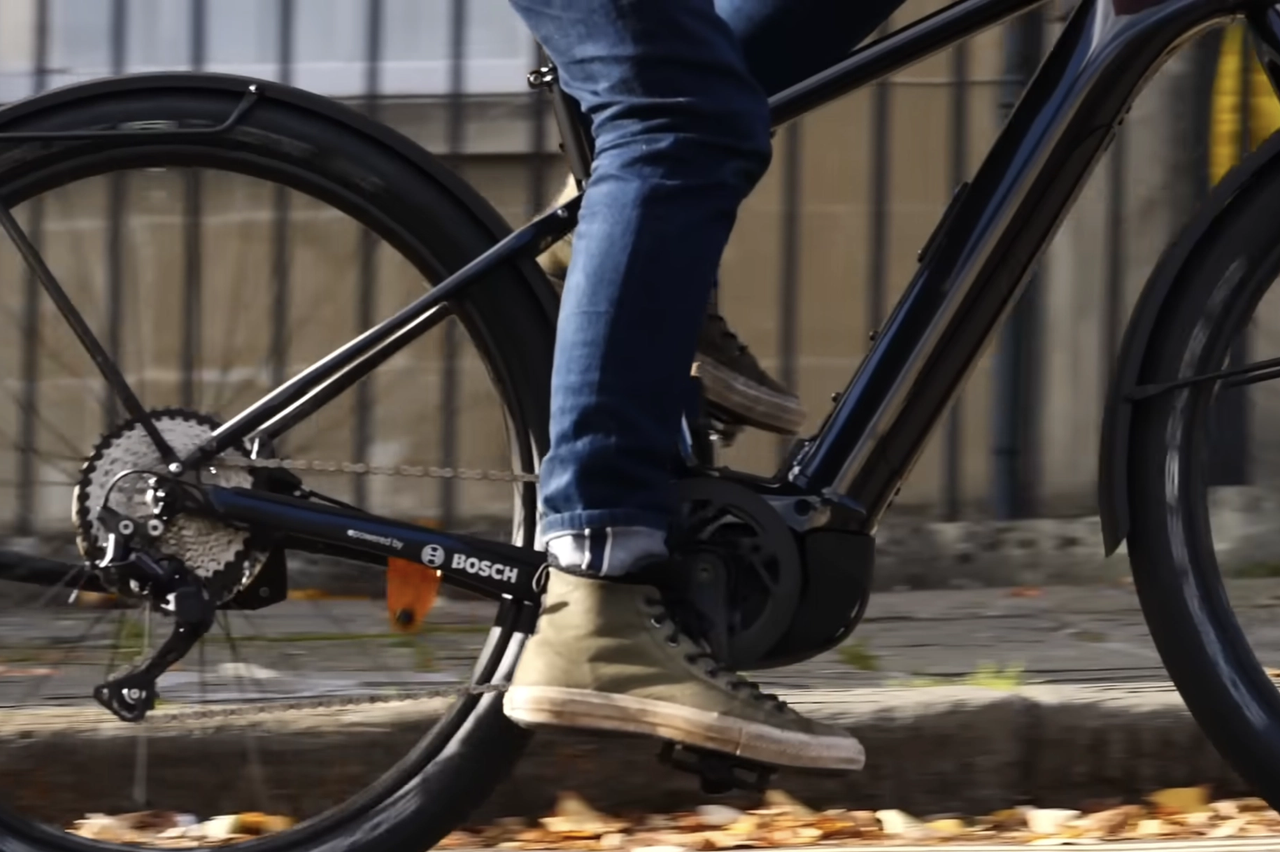8 e-bike safety tips for beginners: How to stay safe while using an electric bike
From avoiding illegal e-bikes to wearing the correct accessories, here's how to stay safe while using an e-bike
Tom Hallam-Gravells
Online Production Editor
© GCN
Follow these safety tips when using an e-bike
E-bikes, also known as eBikes or electric bikes, are currently booming in popularity. Building on the traditional push bike, they contain motors that provide assistance as you ride. This assistance has helped to make cycling more accessible than ever before, opening a new horizon of cycling opportunities.
Like with any type of bike, though, there are safety considerations attached to e-bikes and it’s important to be aware of these. From following e-bike laws to wearing the correct clothing and accessories, here are eight safety tips for e-bike riders.
Avoid illegal e-bikes: Buy from a reputable brand
We’ll start our guide to e-bike safety with a healthy reminder to abide by local laws. That means using a legal e-bike that conforms to your country’s regulations.
Most countries have laws limiting the level of assistance an e-bike can provide. For the UK, EU and Australia, it's 25kph. In most of the USA, it's 20mph. Wherever you live, make sure to check and get an e-bike that's within the rules.
These limits are there for safety reasons, and e-bikes motors are capped to stop providing assistance once a bike exceeds these speeds.
Not all e-bikes conform to this, though. In some shady corners of the e-bike market, illegal models which aren’t capped exist, offering the promise of higher assistance levels and, in some instances, assistance without the need to pedal, at which point it’s essentially just a moped. Avoid these illegal models!
E-bikes are capped for a rider’s safety and, just as importantly, for the sake of other pedestrians and motorists. Using an illegal e-bike puts everyone’s safety at risk, including your own.
By buying from a reputable and well-known brand, you can be confident that your e-bike meets the legal requirements, helping to keep you safe in the process.
Make sure you have the right type of e-bike

© GCN
There are many different e-bikes available, like this gravel bike
We’ve narrowed the buying criteria to something that is legal, which we hope was a given, but you shouldn't just buy any old legal model. Like with regular pedal bikes, there are multiple types of e-bike available and you need one that meets your specific riding needs.
Using the correct type of e-bike will simply be more enjoyable, but more importantly still, it’ll be safer too.
There’s no point in taking a hybrid or road bike for a major off-road jaunt, for example, while a full-suspension mountain bike isn’t going to excel on a road-bound commute to work. Pick a bike that you feel comfortable with and that will translate into added confidence, and confidence results in a safer ride.
Need help finding the right e-bike? Check out our comprehensive guide, linked here.
Practice in a quiet location
We know you’ll be eager to take your new e-bike out for a test ride straight away, but you’ll want to familiarise yourself with it first, especially if you’re new to e-bikes or cycling in general.
While e-bikes are still bikes, they function differently to regular push bikes, most obviously because of the motor. This opens up a few differences and you don’t want to be caught off-guard by them when pedalling along a busy area. So, test out the below functions in a quiet area before heading out for a more ambitious spin.
How to adjust e-bike assistance mode and gears

© GCN
Assistance level can be changed via a device on the handlebar
First up, there are assistance levels to contend with. Contrary to some common beliefs, an e-bike doesn’t offer assistance for free and you have to be pedalling to receive it. However, once the assistance kicks in, it can provide a considerable boost, enough to make you tightly clench the handlebars if you’re not used to it.
For most e-bike systems, the assistance level can be altered. This will usually be via a device on the handlebars which will often be a part of or connected to a small computer. Familiarise yourself with this and learn how to adjust the assistance level before heading on a big ride.
How to brake safely on an e-bike
Next up: braking. There’s good news here as e-bike brakes are exactly the same as they are for normal bikes.
Most modern bikes have disc brakes thanks to their greater braking power and better modulation, but some may still use rim brakes. Whichever system your bike has, the brakes can be operated via levers on the handlebars.
Each lever will operate a different brake, either front or rear. Test both to make sure they provide comfortable braking power and adjust them if necessary.
Learn the rules of the road

© GCN
Always follow the rules of the road when using an e-bike
Are you familiar with the rules of the road?
You need to be before heading out on your e-bike. These are fairly basic principles but ones that will keep you and other road users safe, plus pedestrians too.
For a start, always follow the speed limit. This one will be hard to fall foul of due to the capped assistance level but there may still be roads with limits that fall below an e-bike’s maximum assistance speed.
Always signal your intentions to other road users too by putting your arm out if you’re turning, and be aware of what other road users around you are doing.
These are the basics but there may be other specific laws for your country that you need to abide by, like in the UK where a rider must be at least 14 years of age to ride an e-bike on roads. Research these and make sure you’re familiar with them.
…while avoiding roads wherever possible
Sometimes roads are unavoidable but, wherever possible, try to stick to dedicated cycling paths and trails.
Cycling infrastructure has come a long way in the 21st century and cities are much friendlier places to cycle than they once were. Take advantage of this and plan your routes around this infrastructure.
Many cities also have dedicated cycling routes which may still contain sections of tarmac but these will have been selected because they’re quieter. In the UK, for example, the country is dissected by national cycling routes. These can be found in most major cities and are often busy thoroughfares for cyclists. So, you may meet other like-minded cyclists on your travels too.
- Read more: 10 benefits of riding an e-bike
Do you need a helmet for an e-bike?
This point could fall under the legal category for some countries, like Australia where you must legally wear a helmet when riding a bike, including e-bikes.
In a lot of countries it’s not a legal requirement, but you should still wear a helmet at all times. Sure, they may mess up your hair, but that’s a small sacrifice to pay for something that could save your life.
A helmet needs to fit your head snuggly and be secured with straps that go under your chin, otherwise it won’t offer the maximum level of protection. Some helmets also have additional safety technology, like MIPS (Multi-Directional Impact Protection System), which is designed to redirect rotational forces away from the head in an accident.
Stay visible through bright clothing and bike lights

© GCN
Always use bike lights, especially when riding at night
Whether you ride on the road or cycle paths, it’s important to make yourself as visible as possible. That way people will see you coming, which should help to prevent any accidents.
Many e-bikes have in-built lights to help with this job, but you should follow a more-is-better policy and add multiple lights across your bike. As a minimum, you need a front and rear light — something that, again, is a legal requirement in some countries. Then look at other ways to illuminate yourself, like with a helmet, arm and leg lights.
Stick to bright clothing too. Wearing dark colours will make you hard to spot in gloomy conditions. Dedicated cycling clothing will often have reflective qualities so look for this when selecting clothing.
- Read more: GCN tries the cheapest e-bike on Amazon
Follow guidelines when charging an e-bike
All of these tips have been focussed on riding an e-bike, but safety also extends to when it’s tucked up at your home. Once you’ve finished a ride, the battery is going to need topping up, which is simply a matter of plugging it into a mains socket.
There have, however, been rare incidents of batteries or chargers malfunctioning but this is usually caused by improper use. As long as you follow the manufacturer’s guidelines, you shouldn’t run into any problems.
As a general guide, you should always charge the bike indoors, avoid using extension leads and use a manufacturer-approved charger — don’t trust a cheap charger you find online.
For more tips and advice, visit our skills and maintenance sections.






.jpg?w=600&auto=format)



.jpg?w=600&auto=format)